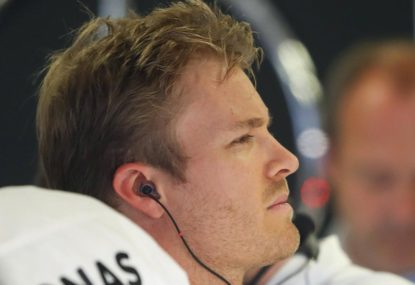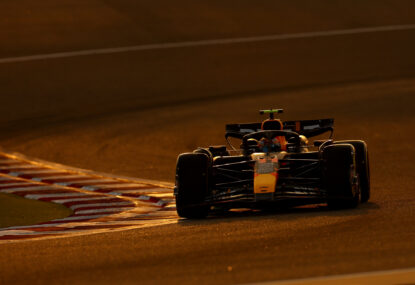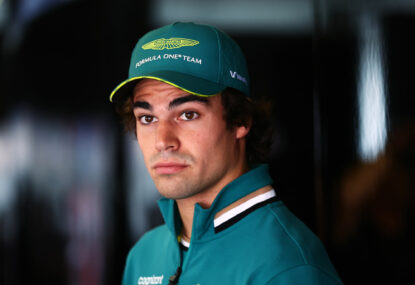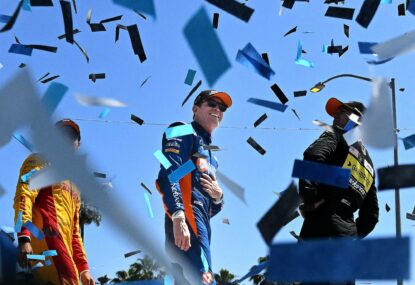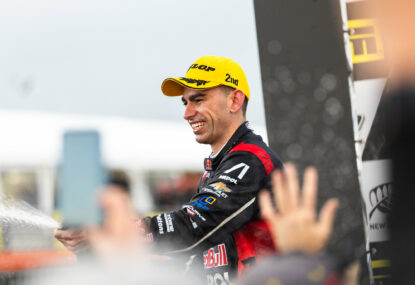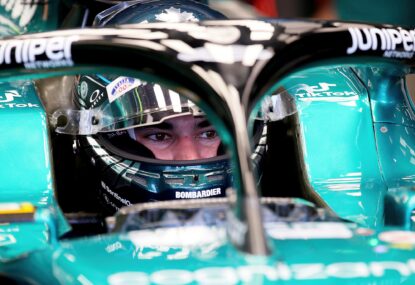Isn’t it interesting that the classic European circuits tend to throw up classic Formula One moments? Funny that.
The weekend’s Austrian Grand Prix, run on regular tarmac as opposed to the super-smooth stuff preferred by new tracks, conspired to pit a wild array of cars against each other based on contrasting strengths.
Look no further than Jenson Button’s sixth-place finish or Pascal Wehrlein’s tenth place. The result was another fascinating grand prix, the winner of which was undecided until the final lap.
There is, of course, a caveat for that conclusion. The final stint of the race characterised by Lewis Hamilton’s pursuit of teammate Nico Rosberg was never supposed to happen, and their coming together was more a manufacturing error made by the Mercedes pit wall than anything else.
Let’s start with the set-up. Hamilton qualified on pole, got away cleanly from the line, and had the pace and tyre life on the brittle ultrasoft tyre to execute the team’s preferred one-stop strategy to cover Kimi Räikkönen’s own one-stopping car.
Meanwhile, Sebastian Vettel and Nico Rosberg were scything trough the field with the inherent pace of their cars – Vettel on a one-stop, Rosberg reluctantly on a two-stop after he couldn’t extend the life of his ultrasoft tyres during the opening stint.
Rosberg had jumped ahead of Max Verstappen, who was struggling on his opening stint supersofts, Räikkönen, who had been pitted into traffic in a classic example of Ferrari strategic underperformance, and Hamilton, who was on a different strategy, and was behind only Vettel.
But on lap 26, the complexion of the race dramatically altered.
Vettel’s right-rear tyre exploded, bringing out a safety car. Rosberg headed Hamilton, albeit on different strategies, but the Mercedes car’s pace over the trailing Red Bull Racing cars, which were preventing Räikkönen from moving forward, turned Rosberg’s two stop from the non-preferred contra-strategy into the fastest way to finish the race.
“It was clear that Lewis’s one stop was perfectly viable to beat everyone else, but not his teammate, because Nico’s two-stop was faster than predicted,” said Mercedes executive director Paddy Lowe.
“We therefore elected to also stop Lewis for another set of soft tyres, and Nico changed onto the supersofts as he didn’t have another set of soft tyres.”
This was the crux of what led to Rosberg and Hamilton colliding on track on the final lap. Hamilton had his race-leading advantage, earned by squeezing more life from used ultrasoft tyres in the first stint than previously thought possible, undermined by his strategy proving to be the wrong one, while Rosberg was put on the non-preferred race tyre because Mercedes had brought one fewer set of the soft tyres for him.
Fast-forward to the final lap. Hamilton is attacking Rosberg for the lead out of turn one and into turn two. Unbeknownst to him, Rosberg is suffering from near-terminal brake problems. He swoops surprisingly easily around the outside to take back what he earned.
Rosberg, having fought back from sixth on the grid by maximising what was accidentally the fastest strategy but was now about to have his lead stolen from him because of a car handicap, found himself in a difficult position.
In some respects, it’s surprising that Rosberg defended so aggressively. That Hamilton chose to ride wide around the corner, giving Rosberg (almost) maximum space, suggests that the German’s increasingly hard racing, including at this year’s Spanish Grand Prix, had been sufficient to teach Hamilton he would no longer be a pushover. It made driving him off the road an unnecessary and deeply unedifying display of unsporting intra-team behaviour.
On the other hand, one can almost instantly recall a litany of situations in which Hamilton had wilfully pushed Rosberg off the circuit with no post-race reproach. The Canadian Grand Prix this year, and the United States and Japanese grands prix last year, to name just three. Undoubtedly these moments will have guided Rosberg as to what might be acceptable.
The key difference between the above listed three and the weekend’s ugly incident is that Hamilton had at very least taken the apex or racing line into the corner on each occasion. Rosberg never even tried, and at best half-heartedly turned once contact was guaranteed.
Rosberg’s behaviour, then, is marginally worse than Hamilton’s compared to the above situations, and it isn’t fair that Hamilton escaped on each of those occasions with nothing close to Rosberg’s ten-second time penalty and two penalty points – but that doesn’t negate Rosberg’s culpability.
Nico Rosberg’s reputation has taken a hit for his behaviour, and rightly so. However, what the Austrian incident illustrates is not that he’s petulant or even that he’s incapable at wheel-to-wheel racing. It is that his credentials for being the killer in the car – for having that critical quality that makes race winners ruthless enough to win championships – are shaky at best.
That, more than lost points or lost face, will hurt most.
Follow @MichaelLamonato from the #BritishGP paddock on Twitter





























































































